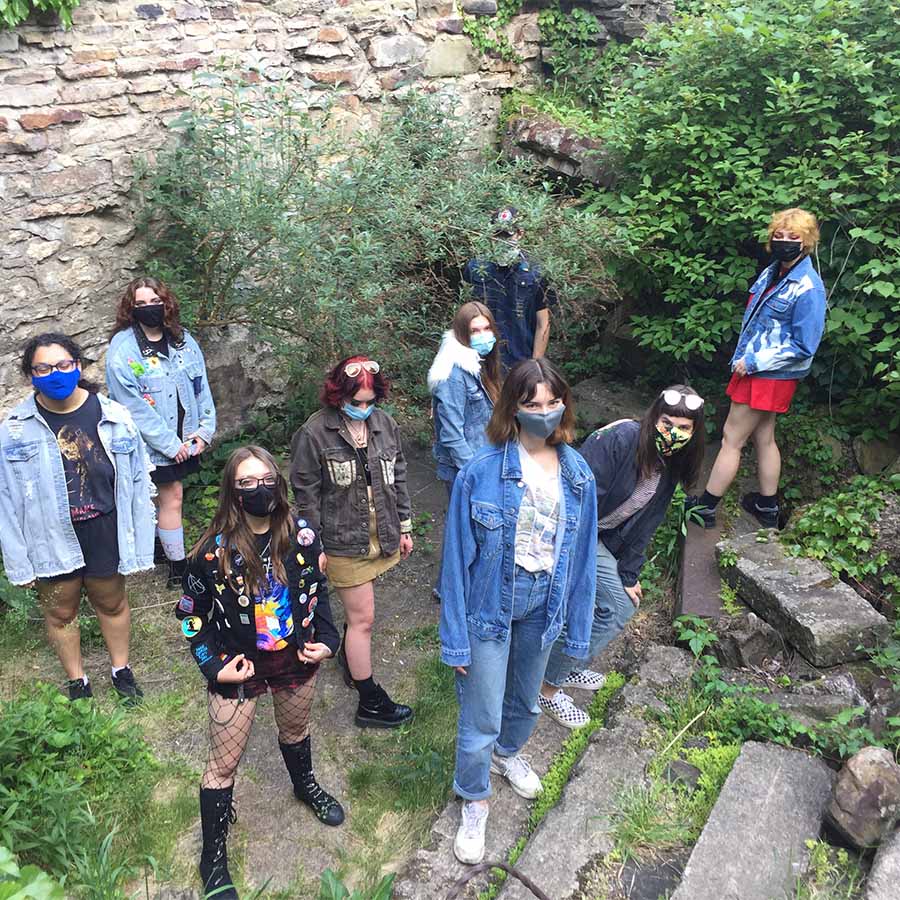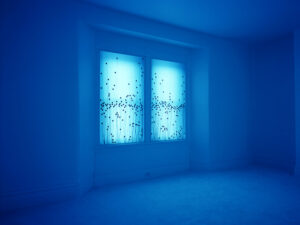This installation is founded on the quotation of a passage of the comic album called "The Jewels of the Castafiore", starring the famous Belgian hero Tintin, created and realized by Hergé.
This play is a reflection on the (im)possibility of accepting diversity and the other. The fragmented body of the neoplasm—the fruit of unstable conditions—overcomes barriers, loves and denies itself and others, wanders around, forgetting its profession. It frequently and with pleasure divides, goes through dangerous palpation, questions the possibility of contact with the experience of the other. Poorly brought up but very successful, it invites us to a trans-species transition.
Lorem ipsum dolor sit amet, consectetur adipiscing elit. Fusce at elit quis felis ullamcorper vehicula non in est. Maecenas finibus pharetra justo et faucibus. Nulla eu tortor vel ex volutpat efficitur. Vivamus placerat turpis in aliquet venenatis. Quisque ac lacinia mauris. Nam quis lobortis elit. Vestibulum sagittis nisi sit amet euismod hendrerit. Mauris non sodales odio. Donec efficitur molestie quam, sed lobortis massa vestibulum ut.
Nunc at arcu sodales nisi porta euismod non vel neque. Phasellus at lobortis ante, in suscipit justo. Proin non purus vitae nisi molestie consectetur. Vestibulum volutpat lobortis interdum. Vestibulum pretium ligula lorem, egestas ultricies lectus ultricies ac. Curabitur venenatis vulputate dolor.
Patrice Carré recreated a scene from the Belgian comic book, Adventures of Tin-Tin: The Castafiore Emerald, with sound effects that illustrate the story. Carré's installation, Igor Wagner Has Gone to the Races, portrays an incident in which a character runs away from practicing his scales by hiding a recorder behind the music sheets and retreating to the racetrack on a bicycle. Inside the room, Carré's interpretation of the story includes two photographs of the artist in medieval armor and a sea captain's costume from the 1400's. Printed on the walls are the five-line pattern of musical clefs in a race track oval with the names of composers and racetracks from around the world.
Artist Statement
This installation is founded on the quotation of a passage from the comic album called "The Jewels of the Castafiore", starring the famous Belgian hero Tintin, created and realized by Hergé.
The famous opera singer called La Catafiore has invited herself to the castle of Moulinsart between two engagements. She is accompanied, among others, by her pianist Igor Wagner. Moulinsart, where Tintin, the Captain Haddock, and Tournesol, the Professor, live when they are not roaming the globe in search of adventure, is a calm place. In a few pages of the album, the situation is going to change.
Like a cyclothymic star, the opera singer, as soon as she arrives at the castle, imposes her diabolical character, her versatility, her authority crisis, and her volubility to all its occupants. This female tyrant commands her pianist and forces him to practice scales. All the protagonists of this story are enemies of vacuity, especially the poor Igor Wagner. Igor will invent a stratagem in order to make his employer believe that he practices his scales, while he has left Moulinsart and gone to the nearest village to bet horses. Tintin quickly discovers the stratagem because he is making an inquiry in the castle after the disappearance of the jewels.
The present installation illustrates precisely one of these moments when Igor Wagner has just left the living room where he was working. He is surprised by Tintin, as the pianist goes to the village on a bicycle.
In the installation, one can think that Igor Wagner is already preoccupied with the idea of sneaking discreetly out the living room and that, while he looks at the walls around him, the moldings of the paneling have transformed themselves into approximate images of racecourses, with five blue lines overlapping closed loops. Names of racecourses appear. He still looks vaguely at the score. He also thinks about "all these recital tours" throughout Europe and both Americas and, of course, about the racecourses he has gone to or he'll go to. Epsom, Chantilly, Ascot, Champklow (in Syldavia), Palermo, Capanelle, Belmont Park, Aqueduct, Deauville, Vincennes, San Siro, Kentucky Downs, Tor di valle, Gavea, etc. He also thinks about work, about the burden of all these opera composers from whom he can escape for a brief moment. Fauré, Rossini, Rameau, Gounod, Verdi, Leoncavallo, Hahn, Gluck, Puccini, Bizet, Monteverdi, Donizetti, Offenbach, Bellini, etc. Frozen shot.
Igor Wagner Convinces the occupants of the castle that he is still there, by hiding a tape recorder behind the music rest of the piano, which diffuses taped scales. In the installation, a ladder is leaning against one of the windows, consequently, we can think that Tintin has already discovered the make-believe. This ladder can be used by the spectators to see inside the space. And the same spectator can listen to the sound tape, a mixing of scales and horserace results. The spectator takes the place of Tintin. But he cannot get into the space. Igor Wagner, leaving his position of the controlled becomes the controller, and he has disappeared; only a bicycle, situated close to the installation, is the evidence of his flight.
Exhibition
Patrice Carré, born in 1957 in Angers, graduated from the École des Beaux-arts de Caen. He lives and works in Marseille, where he is also a professor at the École Supérieure des Beaux-arts.










